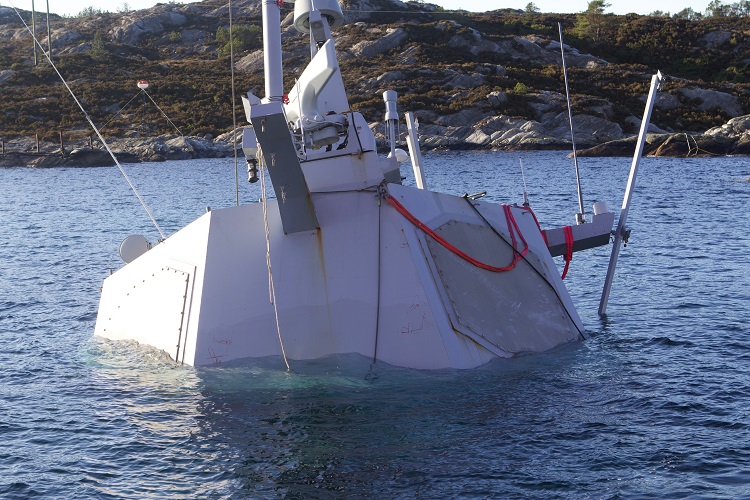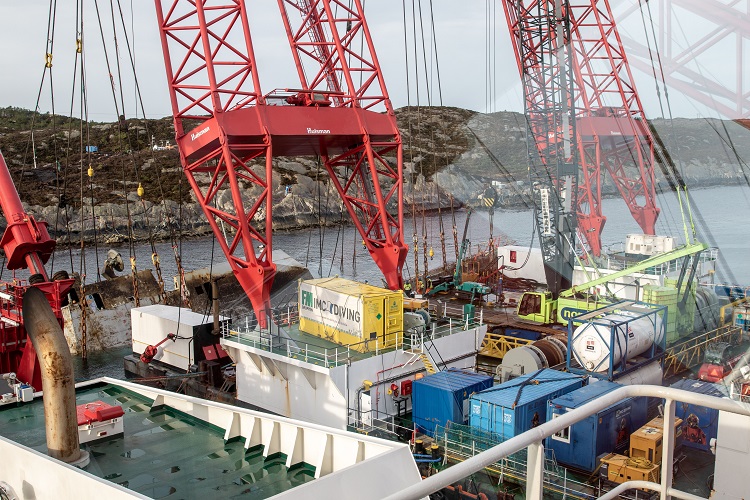On January 25th we noted:
IBD: "Dow Jones Rises 3,100 Points From Dec. 26 Low; 6 Top Stocks Break Out"
We've already thanked Santa and cut the risk profile, letting-go of the
triple-leveraged index stuff and figuring basis on the S&P e-mini
options. On to the individual issues and maybe a sinkhole of a Broadway
production....
Among the individual names are Xilinx and First Solar—which despite a meh report has since been gaining in relative strength.
Another area that Investor's Business Daily has been cheerleading (hey, we're not proud, we get some of our very best ideas from journalists) is software/cloud stuff with Salesforce, Atlassian and Workday leading the pack. Here's a November 29 post ""
Following The Salesforce Earnings Tour de Force: "Workday, VMware Signal Breakouts On Strong Earnings (CRM; VMW; WDAY)"
Software and cloud seems to be the new FAANG.
And on December 27, "
After the Close: Futures Turn Lower, IBD Pitches Some Software Names (WDAY)".
A few days ago, from Motley Fool Feb. 25:
How Innovative Is Workday?
Powerful organic growth can indicate years of outperformance in
young tech stocks. Here's how the online enterprise resource planning
pioneer rates -- and what to look for next.
Organic innovation is hard enough.
Creating products that help usher in entirely new categories is rare.
The most innovative companies combine both qualities to disrupt
incumbents and unleash massive wealth for early investors.
Is Workday (NASDAQ:WDAY),
which helped bring the cloud revolution to large-scale enterprise
resource planning (ERP) and human resources (HR) software, that sort of
multibagger in the making? It's certainly growing fast enough:
Revenue rose 36% in fiscal 2017 and 2018, and it's up another 30.8%
over the trailing 12 months, according to S&P Global Market
Intelligence.
Continued improvements in the underlying platform have contributed to
those gains. For example, in August 2007, Workday unveiled the beta
release of its financial management platform. Today, the company is
signing big names every quarter and reports over 60% growth in annual
contract value (ACV) for its financial management suite of products.
Recent wins include FOX, H&R Block, and the Atlanta Braves baseball team.
Ambitious, effective innovation will be required to make continued
gains in a tough category, so it's worth understanding how effective
Workday's R&D efforts have been to date, and whether investors have
reason to expect even better results in the future. Let's go under the
hood and apply my four-question test....MORE
Today we have Bloomberg saying nice things:
Workday's $10 Billion Plan to Outsell Oracle in HR Software
Last
December, in a large building resembling a warehouse in the Bay Area
suburb of Pleasanton, California, 2,400 Workday Inc. employees or
“workmates” gathered for a day of raucous festivities. An employee band,
cheekily misspelled Wrok Day (as in Rock Day), played songs like
Nirvana’s “Smells Like Teen Spirit,” and Hall & Oates’s “You Make My
Dreams.” Some in the crowd waved glow sticks and cheered. But the most
rapturous applause at the event was reserved for a number: $10 billion.
In his speech to the troops, Aneel Bhusri, the co-founder and chief
executive officer, said the 14-year-old upstart was targeting that
annual sales milestone in as many as six years, up from $2 billion last
year.
“We can get there,” he said as the crowd cheered. “It’s achievable under almost any scenario.”
Workday
makes applications that help companies with mundane tasks like keeping
payroll, plotting expenses, tracking employee absences and managing job
candidates. It sounds unglamorous, but as in many of Silicon Valley’s
business-focused software fields, there’s fierce drama behind the
scenes. Workday co-founders Bhusri and David Duffield once had a human
resources software company, PeopleSoft, that was taken over by Oracle
Corp. in a famously hostile acquisition. Now they're back with a
familiar rival: Oracle.
Most
large companies still run older financial tools made by Oracle, the
world’s second-largest software maker, or the German giant SAP SE.
Workday has persuaded big corporate clients like Bank of America and
Amazon.com Inc. to use its software, but the key to reaching that
magical $10 billion number is getting more companies to switch their
cloud-based accounting tools as well.
“The
biggest challenge for Workday is inertia,” Anurag Rana, an analyst at
Bloomberg Intelligence, said. Accounting systems are “the heart and
lungs of your operation and people are reluctant to change that. It is
very difficult to get rid of your SAP and Oracle systems and move to the
cloud.” Workday’s customer service record may be its most valuable tool
in growing its client list, he added.
Bhusri
has tried to take on Oracle and SAP in part by cultivating a kinder,
gentler image. Both of Workday’s larger rivals have accused customers of
violating complex contracts, and asked for large financial penalties.
Lawsuits have sometimes resulted, such as SAP’s suit with beverage maker
Diageo, which was settled out of court in 2017. Oracle and SAP have
also both been accused of pressuring clients to upgrade their software.
An SAP spokeswoman declined to comment. Oracle didn’t respond to a
request to comment.
In
a business known for its egotistical characters – including
Oracle Chairman Larry Ellison, who frequently rants against his rivals –
Bhusri said in an interview he’s determined to compete as a “nice guy,”
comparing himself with Stephen Curry, the point guard of the Golden
State Warriors, who has a reputation for being amiable.
But
Bhusri is just as likely to lob insults at his competitors, even if he
feigns to soften the blow. “They’re both struggling making a transition.
Someone called them dinosaurs,” he said to his employees about Oracle
and SAP on stage in December. “Not me.”
In
2005, Oracle completed its hostile takeover of PeopleSoft, culminating a
grueling 18-month affair that included an antitrust lawsuit with the
U.S. government and PeopleSoft’s board rejecting no fewer than five
Oracle bids. Duffield and Bhusri were powerless to stop it and left
feeling disappointed. Later that year, they met for breakfast at a diner
in Truckee, California, and plotted their next step, sketching on a
napkin the first stages of what would become Workday, which would use
newer technology than PeopleSoft – cloud computing....
MUCH MORE
This is not an unknown name and unfortunately the stock reflects that:
But as the old-times used to say: "The good ones always look expensive, and then they go higher."
There's a rumor the Go-Go's may make an appearance after the report.
Previously on leadership:
Nov. 30
China? Soybeans and Transport Stocks Are Up On a Meh Day
And cloud software....
If one can ascribe animal spirits to lines-on-chart I'd say soybeans are looking for a reason to trade higher.
Great. I am now anthropomorphizing inanimate objects.
Finally, software. Going back to IBD, November 29, evening:
Workday Stock Pops As Earnings Beat On Financial Software Growth
Workday (WDAY)
late Thursday reported third-quarter revenue, profit and billings that
topped expectations as the enterprise software maker signed bigger deals
and gained more customers for financial management tools. Workday stock
popped in after-hours trading....
...Billings growth, a sales metric, was a bright spot, said Piper Jaffray
analyst Alex Zukin. He said calculated billings jumped 48% to $830
million.
"Workday has not seen this level of billings growth since fiscal Q2 2016, or 13 quarters ago," he said in a report....MORE
The stock is up $19.78 (+13.61%) at $165.08.
Nov. 27
"Dow Jones Futures: Salesforce Earnings Bullish For Stock Market Rally" (CRM)
Nov. 20
Dow Jones Falls 1,000 Points In 2 Days (Semiconductors Surge tho)
The stock that will signal a turn in sentiment is Salesforce which led
the whole Software is Eating the World on the upmove and then, as the
Russians say, The World Eats the SaaS. Or something....











"This is another stock image of the same woman, who is not the teenager from the court judgement, looking confused."
BuzzFeed: thank you.
posted by zachlipton at 4:01 PM on September 15, 2018 [26 favorites]